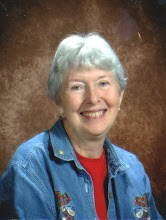 My last post to this blog told of a very special Christmas Dinner. The Downen Family celebrated with all of Mary Jane and Stephen Downen's Children and grandchildren present. Standing near the right edge of the picture is a young lad looking over his sister Ruth's head. He is Marvin Reager, only son of George and Evaline Reager. Four of his sisters are in that picture and two more will be born to George and Evaline, one the day after Christmas 1902. The newspaper account of the Downen Christmas festivity mentions that not one member of the family had passed away. That fact makes this event the next July seem even more tragic.
My last post to this blog told of a very special Christmas Dinner. The Downen Family celebrated with all of Mary Jane and Stephen Downen's Children and grandchildren present. Standing near the right edge of the picture is a young lad looking over his sister Ruth's head. He is Marvin Reager, only son of George and Evaline Reager. Four of his sisters are in that picture and two more will be born to George and Evaline, one the day after Christmas 1902. The newspaper account of the Downen Christmas festivity mentions that not one member of the family had passed away. That fact makes this event the next July seem even more tragic.On July 10th George Reager and his harvest crew were away at another ranch. Only the family, the cook and a chore boy, Lloyd Lake, were at home. Eight-year-old Marvin went to hunt bird's eggs without his mother's knowledge. He climbed 28 feet into a locust tree. A limb broke and he fell to the ground. His sister Hazel, then 11, remembered helping to carry him to the house. Lloyd took the only horse left on the place, Old Lucy, and rode to find Marvin's Dad.
Hazel ran three miles to her Aunt Essie and Uncle Will's home. (Both of these family members are in the Downen picture. Will is the tall gentleman on the left, rear and Essie is in the center of the back row in a light colored dress.) Essie drove into Orland to get a doctor, nearly ruining a young horse in the process. She ran him the entire six miles and the weather was very hot.
There are two newspaper reports of this tragic accident:
"A little after the dinner hour Wednesday Marvin Reager fell some twenty feet from a tree on the Reager ranch east of Orland and sustained a very serious injury. He was badly bruised about the head. His right arm was broken and the bones of his left were cracked. There was a compound fracture of his right thigh, the bones of which were driven through the flesh, his clothing and into the ground by the force of the fall.
Surgical aid was summoned, the wounds dressed and the boy made as comfortable as possible. Thursday morning early Drs. Edmundson and L. P. Tooley went to the Reager ranch and completed the work of properly caring for his injuries, but at best it will be a long time before he climbs another tree. Marvin is the son of Geo. A. Reager, a well known and respected farmer who lives six miles east of Orland, and his youth will make the many injuries less serious than they would be to and older person.
Two days later another account appeared in the paper relating the outcome of the previous incident:
A Young Life Ended From his terrible injuries and very acute sufferings, Death claimed for his own, Marvin Reager, at three o'clock Friday afternoon.
The immediate cause of death was an injury to the brain at the time of his fall, and has been feared by the physicians in attendance ever since the accident.
Shortly after the dinner hour Friday a messenger arrived from the Reager home and sent the doctor hurrying to the boy's bedside. He was much worse and died at three o'clock.
His death will be a terrible blow to his parents, whose only son Marvin was. This entire community mourns with the sorrowing parents.
The funeral will take place at the Reager home east of town at 3:30 this afternoon and the remains will be interred in the Odd Fellows Cemetery. Rev. F.N. Baker will preach the funeral sermon.
My mother, not yet two at the time of the accident, had no memory of her only brother. Having no male heir helped George, decide to build a house in town and he eventually sold his farm land.





















